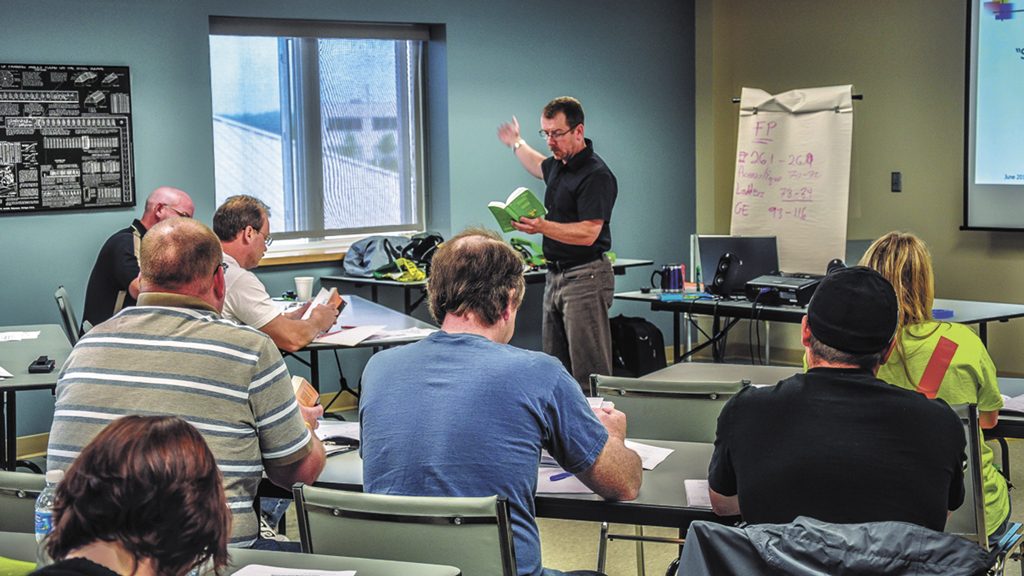Last summer Ontario’s Ministry of Labour conducted a safety inspection blitz across Ontario’s construction industry, evaluating the work of site supervisors.
It was for good reason. There has been an influx of young workers in the industry and a few “tragic incidents” have resulted in 2017, says Mark Elias, media relations and communications, Infrastructure Health & Safety Association (IHSA).
Over June and July, the MOL inspectors visited about 1,500 workplaces and issued close to 4,000 orders for violations, 292 of those were stop work orders.
“The role of a supervisor is clearly a huge piece of the success of health and safety in a workplace,” says Enzo Garritano, president and CEO, IHSA.
He says the supervisor blitz makes sense because supervisors set the health and safety tone in the workplace.
“With competent supervisors, employers will have the oversight and control over health and safety in the workplace they need to ensure everyone returns home safely after a day’s work and will help establish their due diligence in regards to workplace health and safety.”
“Without their leadership, enforcement and commitment you leave it up to the workers,” says Garritano, adding that the increase in young, inexperienced workers raised the potential for accidents.
“Without supervisors, you don’t have the control you need as an employer and then your responsibility — your due diligence — is out the window.”
The IHSA offers a two-day supervisory training course, which covers a supervisor’s responsibilities under the Occupational Health and Safety Act (OHSA). Training is specific to meet regulations in each industry sector. The six-module program covers: elements of supervising, legal responsibilities, communication and motivation, health and safety programs, and site emergencies and incident investigation.
“The primary goal is for IHSA to equip supervisors with what they need to prevent incidents, but it also serves to equip them with the knowledge to handle an incident without the need of outside help from the MOL,” says Elias.
In 2016, 3,800 workers attended the basics in supervising course at the IHSA.
Garritano suggests that on almost any construction site there will be a chance for an inspector to find an infraction — an opportunity to write an order. No site is perfect and construction (unlike a warehouse where a worksite can be controlled and constant) is a changing environment every day.
He says among small contractors it is difficult to track which ones have trained supervisors partly because supervisors there might wear different hats.
“A worker might be a supervisor one week and be back on the tools the next, or move from one employer to another as demand for resources changes.”
Garritano says small businesses employ 45 to 50 per cent of workers in Ontario’s construction industry.
Many larger contractors have health and safety programs that include supervisor training.
Elias says a long-term goal is to see workplaces become self-reliant in health and safety. The role of the supervisor includes “a competent knowledge and understanding of the legislation — a fact and role/responsibility that not many supervisors realize.”
“A construction company that is self-sufficient in health and safety practices and procedures can effectively prevent LTI’s and reduce incidents altogether to remain more productive overall,” says Elias.
Garritano says that there is a “heightened awareness” in the industry with respect to the role and importance of a supervisor on the oversight health and safety.
Under the OHSA, a supervisor is required by any contractor with more than five workers — an obligation some small employers aren’t aware of, he says, noting the IHSA is doing outreach to clarify contractor responsibilities.
Over a span of several years, many small contractors don’t have lost-time injuries, which can lull these employers into a false sense of security and prevent them from developing health and safety initiatives.
“They have to realize the risks still exist and that they may just have been lucky so far,” says Garritano.
The IHSA teams up with unions and construction associations to conduct various training initiatives. The MOL runs various safety inspection blitzes annually in the industry based on consultation with the industry.
“These blitzes aren’t done randomly,” says Garritano, noting consultations are currently under way for the 2018-19 season.



Recent Comments
comments for this post are closed